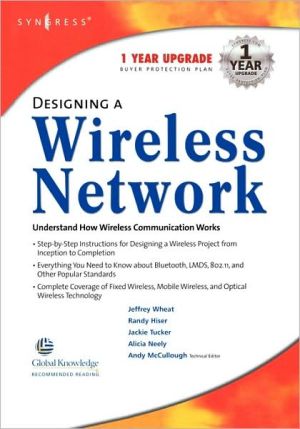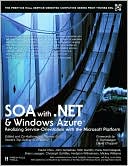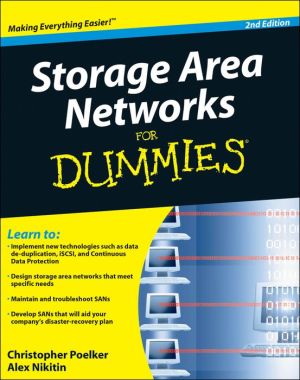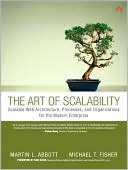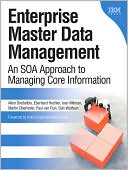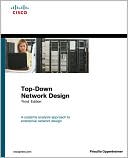Designing A Wireless Network
Business is on the move - mobile computing must keep up!\ Innovative technology is making the communication between computers a cordless affair. Mobile computing with laptops, hand helds and mobile phones is increasing the demand for reliable and secure wireless networks. Network engineers and consultants need to create and build cutting-edge wireless networks in both the small business and multi-million dollar corporations.\ Designing Wireless Networks provides the necessary information on...
Search in google:
This guide for IT professionals presents an introduction to wireless technologies and the design and development of wireless networks. Coverage includes, for example, the components of a wireless network and how they work, the physics behind wireless communications, and protocols such as TCP/IP and OSI. Coverage extends to a discussion of fixed and mobile wireless technologies, wireless LANs and PANs, and optical wireless technologies. The volume also contains case studies of fictional wireless projects in industrial, hospital, college, and home settings. Annotation c. Book News, Inc., Portland, OR (booknews.com)
Chapter 1\ Introduction to Wireless: From Past to Present Solutions in this chapter: \ \ Exploring Past Discoveries That Led to Wireless\ Exploring Present Applications for Wireless\ Exploring This Book on Wireless\ Summary\ Solutions Fast Track\ Frequently Asked Questions\ \ Introduction\ You've been on an extended business trip and have spent the long hours of the flight drafting follow-up notes from your trip while connected to the airline's onboard server. After deplaning, you walk through the gate and continue into the designated public access area. Instantly, your personal area network (PAN) device, which is clipped to your belt, beeps twice announcing that it automatically has retrieved your e-mail, voicemail, and videomail. You stop to view the videomail-a finance meeting-and also excerpts from your children's school play.\ Meanwhile, when you first walked into the public access area, your personal area network device contacted home via the Web pad on your refrigerator and posted a message to alert the family of your arrival. Your spouse will know you'll be home from the airport shortly.\ You check the shuttlebus schedule from your PAN device and catch the next convenient ride to long-term parking. You also see an e-mail from your MP3 group showing the latest selections, so you download the latest MP3 play list to listen to on the way home. As you pass through another public access area, an e-mail comes in from your spouse. The Web pad for the refrigerator inventory has noted that you're out of milk, so could you pick some up on the way home? You write your spouse back and say you will stop at the store. When you get to the car, you plug your PAN device into the car stereo input port. With new music playing from your car stereo's MP3 player, you drive home, with a slight detour to buy milk at the nearest store that the car's navigation system can find.\ The minute you arrive home, your PAN device is at work, downloading information to various devices. The data stored on your PAN device is sent to your personal computer (PC) and your voicemail is sent to the Bluetooth playback unit on the telephone-answering device. The PAN device sends all video to the television, stored as personal files for playback. As you place the milk in the refrigerator, the Web pad updates to show that milk is currently in inventory and is no longer needed. The kids bring you the television remote and you check out possible movies together to download later that night.\ A few weeks later, you are en route back to the airport, but this time with the family for vacation. During the drive, you try to figure out what you could have forgotten. You check the status of the home security system on the PAN device, which was indeed activated-for alarm zones, interior light, and stereo activation to make it look and sound as if people are home-and check the lawn sprinkler mode as well, which was not on, so you set it to activate in the evenings while you're away. Your spouse had already ordered the grocery and dry cleaning delivery for the day you return, from the Web pad on your refrigerator.\ As you head toward the check-in lines at the airport, you walk through the designated public access area. Your PAN device beeps, showing that there is an update on your flight plans-the flight is delayed. Your teenagers, unflappable as always, make the best of the situation, flopping in the nearest chair and pulling from the carry-on bag the Web pad that they had been sure to remove from the refrigerator just before they left. They initiate a game session to pass the time. You head over to the Bluetooth kiosk to print out a new temporary message about the flight. The message you print out also includes a coupon for the new coffee shop around the corner from the gate; your spouse takes the coupon to go get some much needed caffeine for the two of you. You sit down with the kids and they relinquish the game so you can watch a movie together with a video-on-demand session on the Web pad. This helps settle the family's nerves and makes the time go by quickly.\ Do these scenarios sound familiar? If they are not familiar now, they will be soon. All of the personal wireless technologies are available for purchase now or in the very near future. Innovative service providers plan to create new services and value-added services for public access areas around the world. Soon, we will be able to communicate wirelessly throughout the world. This technology is the leading edge of future technology, a new revolution in communication.\ Now that you've seen a glimpse of the current and future applications of this technology, this chapter will explain some of the history behind this technology; explore how some of the modern trends in wireless communications have developed and how business and the private sector utilize wireless networks; and discuss how that service is delivered.\ Exploring Past Discoveries That Led to Wireless\ Wireless technology is the method of delivering data from one point to another without using physical wires, and includes radio, cellular, infrared, and satellite. A historic perspective will provide you with a general understanding of the substantial evolution that has taken place in this area. The common wireless networks of today originated from many evolutionary stages of wireless communications and telegraph and radio applications. Although some discoveries occurred in the early 1800s, much of the evolution of wireless communication began with the emergence of the electrical age and was affected by modern economics as much as by discoveries in physics.\ Because the current demand of wireless technology is a direct outgrowth of traditional wired 10-Base-T Ethernet networks, we will also briefly cover the advent of the computer and the evolution of computer networks. Physical networks, and their limitations, significantly impacted wireless technology. This section presents some of the aspects of traditional computer networks and how they relate to wireless networks. Another significant impact to wireless is the invention of the cell phone. This section will briefly explain significant strides in the area of cellular communication.\ Discovering Electromagnetism\ Early writings show that people were aware of magnetism for several centuries before the middle 1600s; however, people did not become aware of the correlation between magnetism and electricity until the 1800s. In 1820, Hans Christian Oersted, a Danish physicist and philosopher working at that time as a professor at the University of Copenhagen, attached a wire to a battery during a lecture; coincidentally, he just happened to do this near a compass and he noticed that the compass needle swung around. This is how he discovered that there was a relationship between electricity and magnetism. Oersted continued to explore this relationship, influencing the works of contemporaries Michael Faraday and Joseph Henry.\ Michael Faraday, an English scientific lecturer and scholar, was engrossed in magnets and magnetic effects. In 1831, Michael Faraday theorized that a changing magnetic field is necessary to induce a current in a nearby circuit. This theory is actually the definition of induction. To test his theory, he made a coil by wrapping a paper cylinder with wire. He connected the coil to a device called a galvanometer, and then moved a magnet back and forth inside the cylinder. When the magnet was moved, the galvanometer needle moved, indicating that a current was induced in the coil. This proved that you must have a moving magnetic field for electromagnetic induction to occur. During this experiment, Faraday had not only discovered induction but also had created the world's first electric generator. Faraday's initial findings still serve as the basis of modern electromagnetic technology.\ Around the same time that Faraday worked with electromagnetism, an American professor named Joseph Henry became the first person to transmit a practical electrical signal. As a watchmaker, he constructed batteries and experimented with magnets. Henry was the first to wind insulated wires around an iron core to make electromagnets. Henry worked on a theory known as self-inductance, the inertial characteristic of an electric current. If a current is flowing, it is kept flowing by the property of self-inductance. Henry found that the property of self-inductance is affected by how the circuit is configured, especially by the coiling of wire. Part of his experimentation involved simple signaling.\ It turns out that Henry had also derived many of the same conclusions that Faraday had. Though Faraday won the race to publish those findings, Henry still is remembered for actually finding a way to communicate with electromagnetic waves. Although Henry never developed his work on electrical signaling on his own, he did help a man by the name of Samuel Morse. In 1832, Morse read about Faraday's findings regarding inductance, which inspired him to develop his ideas about an emerging technology called the telegraph. Henry actually helped Morse construct a repeater that allowed telegraphy to span long distances, eventually making his Morse Code a worldwide language in which to communicate. Morse introduced the repeater technology with his 1838 patent for a Morse Code telegraph. Like so many great inventions, the telegraph revolutionized the communications world by replacing nearly every other means of communication-including services such as the Pony Express.\ Exploring Conduction\ Samuel Morse spent a fair amount of time working on wireless technology, but he also chose to use mediums such as earth and water to pass signals. In 1842, he performed a spectacular demonstration for the public in which he attempted to pass electric current through a cable that was underwater. The ultimate result of the demonstration was wireless communication by conduction, although it was not what he first intended. Morse submerged a mile of insulated cable between Governor's Island and Castle Garden in New York to prove that a current could pass through wire laid in water. He transmitted a few characters successfully, but, much to his dismay, the communication suddenly halted-sailors on a ship between the islands, unseen to the spectators, raised their ship's anchor and accidentally pulled up the cable, and not knowing what it was for, proceeded to cut it. Morse faced considerable heckling from the spectators and immediately began modification to the experiment. He successfully retested his idea by transmitting a wireless signal between copper plates he placed in the Susquehanna River, spanning a distance of approximately one mile. In doing so, he became the first person to demonstrate wireless by conduction. Conduction is the flow of electricity charges through a substance (in this case, the water in the river) resulting from a difference in electric potential based on the substance.\ Inventing the Radio\ After the significant discoveries of induction and conduction, scientists began to test conduction with different mediums and apply electricity to machinery. The scholars and scientists of the day worked to apply these discoveries and explore the parameters of the properties. After the theory of conduction in water was proven, new theories were derived about conduction in the air. In 1887, a German named Heinrich Hertz became the first person to prove electricity travels in waves through the atmosphere. Hertz went on to show that electrical conductors reflect waves, whereas nonconductors simply let the waves pass through the medium. In addition, Hertz also proved that the velocity of light and radio waves are equal, as well as the fact that it is possible to detach electrical and magnetic waves from wires and radiate. Hertz served as inspiration to other researchers who scrambled to duplicate his results and further develop his findings. Inventors from all across the world easily validated Hertz's experiments, and the world prepared for a new era in radio, the wireless transmission of electromagnetic waves. An Italian inventor called Guglielmo Marconi was particularly intrigued by Hertz's published results. Marconi was able to send wireless messages over a distance of ten miles with his patented radio equipment, and eventually across the English Channel. In late 1901, Marconi and his assistants built a wireless receiver in Newfoundland and intercepted the faint Morse code signaling of the letter "S" that had been sent across the Atlantic Ocean from a colleague in England. It was astounding proof that the wireless signal literally curved around the earth, past the horizon line-even Marconi could not explain how it happened, but he had successfully completed the world's first truly long-distance communication, and the communication world would never be the same.\ Today we know that the sun's radiation forms a layer of ionized gas particles approximately one hundred miles above the earth's surface. This layer, the ionosphere, reflects radio waves back to the earth's surface, and the waves subsequently bounce back up to the ionosphere again. This process continues until the energy of the waves dissipates.\ Another researcher by the name of Reginald Fessenden proceeded to further develop Marconi's achievements, and he became the first person to create a radio band wave of human speech. The importance of his results was felt worldwide, as radio was no longer limited to telegraph codes.\ Mounting Radio-Telephones in Cars\ In 1921, mobile radios began operating in the 2 MHz range, which is just above the Amplitude Modulation (AM) frequency range of current radios. These mobile radios were generally used for law enforcement activities only. They were not integrated with the existing wireline phone systems that were much more common at that time-since the technology was still so new, the equipment was considered experimental and not practical for mass distribution. In fact, people originally did not consider mobile radio as a technology for the public sector. Instead, the technology was developed for police and emergency services personnel, who really served as the pioneers in mobile radio. It was not until 1924 that the voice-based wireless telephone had the ability to be bi-directional, or two-way. Bell Laboratories invented this breakthrough telephone. Not only could people now receive messages wirelessly, they could also respond to the message immediately, greatly increasing convenience and efficiency. This improved system was still not connected to landline telephone systems, but the evolution of wireless communication had taken one more major step. One issue that still plagued this early mobile radio system was the sheer size of the radio; it took up an entire trunk. Add to the size restriction, the cost of the radio system that was almost as expensive as the vehicle.\ In 1935, Edwin Howard Armstrong introduced Frequency Modulation (FM). This technology not only increased the overall transmission quality of wireless radio but also drastically reduced the size of the equipment. The timing could not have been any better. World War II had begun, and the military quickly embraced FM technology to provide two-way mobile radio communication. Due to the war, companies immediately sensed the urgency to develop the FM technology rapidly, and companies such as Motorola and AT&T immediately began designing considerably smaller equipment. Many of these new inventions became possible due to the invention of the circuit board, which changed the world of electronic equipment of all types.\ Inventing Computers and Networks\ Though the beginning of the computer age is widely discussed, computer discoveries can be attributed to a long line of inventors throughout the 1800s, beginning with the Englishman Charles Babbage, who in 1822 created the first calculator called the "Difference Engine." Then came Herman Hollerith, who in 1887 produced a punch card reader to tabulate the American census for 1890. Later developments led to the creation of different punch card technologies, binary representation, and the use of vacuum tubes.\ The war effort in the 1940s produced the first decoding machine, the Colossus, used in England to break German codes. This machine was slow, taking about 3 to 5 seconds per calculation. The next significant breakthrough was the creation of the Electronic Numerical Integrator and Computer (ENIAC) by Americans John Presper Eckert and John W. Mauchley. The ENIAC was the first general-purpose computer that computed at speeds 1000 times greater than the Colossus. However, this machine was a behemoth, consuming over 160 Kilowatts of power-when it ran, it dimmed lights in an entire section of Philadelphia. The main reason these machines were so huge was the vacuum tube technology. The invention of the transistor in 1948 changed the computer's development and began shrinking the machinery. In the next thirty years, the computers got significantly faster and smaller. In 1981, IBM introduced the personal computer for the home, school, and business. The number of PCs more than doubled from 2 million in 1981 to 5.5 million in 1982; more than 65 million PCs were being used ten years later. With the surge of computer use in the workplace, more emphasis was being placed on how to harness their power and make them work together. As smaller computers became more powerful, it became necessary to find a way to link them together to share memory, software, and information, and to find a way for them to communicate together. Network technology to this point consisted of a mainframe that stored the information and performed the processes hooked to several "dumb terminals" that provided the input.\ Ethernet was developed in the early 1970s and was used to link multiple PCs within a physical area to form what is known as a Local Area Network (LAN). A LAN connects network devices over a short distance. Common applications include offices, schools, and the home. Sometimes businesses are composed of several LANs that are connected together. Besides spanning a short distance, LANs have other distinctive attributes. LANs typically are controlled, owned, and operated by a single person or department. LANs also use specific technologies, including Ethernet and Token Ring for connectivity. There are typically two basic components to the LAN configuration: a client and a server. The client is the node that makes a request, and the server is the node that fulfills that request. The client computer contains the client software that allows for access to shared resources on the server. Without the client software, the computer will not actively participate in either of the two network models.\ Wide Area Networks (WANs) span a much wider physical distance. Usually a WAN is a widely dispersed collection of LANs. The WAN uses a router to connect the LANs physically. For example, a company may have LANs in New York, Los Angeles, Tokyo, and Sydney; this company would then implement a WAN to span the LANs and to enable communication throughout the company. WANs use different connectivity technology than LANs-typically, T1 or T3 lines, Asynchronous Transfer Mode (ATM) or Frame Relay circuits, microwave links, or higher speed Synchronous Optical Network (SONET) connections.\ The largest WAN is the Internet. The Internet is basically a WAN that spans the entire globe. Home networks often implement LANs and WANs through cable modems and digital subscriber line (DSL) service. In these systems, a cable or DSL router links the home network to the provider's WAN and the provider's central gateway to reach the Internet.\ A wireless local area network transmits over the air by means of base stations, or access points, that transmit a radio frequency; the base stations are connected to an Ethernet hub or server. Mobile end-users can be handed off between access points, as in the cellular phone system, though their range generally is limited to a couple hundred feet.\ Inventing Cell Phones\ Wireless technology is based on the car-mounted police radios of the 1920s. Mobile telephone service became available to private customers in the 1940s. In 1947, Southwestern Bell and AT&T launched the first commercial mobile phone service in St. Louis, Missouri, but the Federal Communications Commission (FCC) limited the amount of frequencies available, which made possible only 23 simultaneous phone conversations available within a service area (the mobile phones offered only six channels with a 60 kHz spacing between them). Unfortunately, that spacing schema led to very poor sound quality due to cross-channel interference, much like the cross talk on wireline phones. The original public wireless systems generally used single high-powered transmitters to cover the entire coverage area. In order to utilize the precious frequencies allotted to them, AT&T developed an idea to replace the single high-powered transmitter approach with several smaller and lower-powered transmitters strategically placed throughout the metropolitan area; calls would switch between transmitters as they needed a stronger signal. Although this method of handling calls certainly eased some of the problems, it did not eliminate the problem altogether. In fact, the problem of too few voice channels plagued the wireless phone industry for several years.\ The problem was that demand always seemed to exceed supply. Since the FCC refused to allocate more frequencies for mobile wireless use, waiting lists became AT&T's temporary solution as the company strove for the technological advances necessary to accommodate everyone. For example, in 1976, there were less than 600 mobile phone customers in New York City, but there were over 3500 people on waiting lists. Across the United States at that time, there were nearly 45,000 subscribers, but there were still another 20,000 people on waiting lists as much as ten years long. Compare this situation to today's, in which providers give away free phones and thousands of minutes just to gain a subscriber. Cellular technology has come a long way. The term cellular describes how each geographic region of coverage is broken up into cells. Within each of these cells is a radio transmitter and control equipment. Early cellular transmission operated at 800 MHz on analog signals, which are sent on a continuous wave. When a customer makes a call, the first signal sent identifies the caller as a customer, verifies that he or she is a customer of the service, and finds a free channel for the call. The mobile phone user has a wireless phone that in connection with the cellular tower and base station, handles the calls, their connection and handoff, and the control functions of the wireless phone.\ Personal communications services (PCS), which operates at 1850 MHz, followed years later. PCS refers to the services that a given carrier has available to be bundled together for the user. Services like messaging, paging, and voicemail are all part of the PCS environment. Sprint is the major carrier that typically is associated with PCS. Some cellular providers began looking into digital technology (digital signals are basically encoded voice delivered by bit streams). Some providers are using digital signals to send not only voice, but also data. Other advantages include more power of the frequency or bandwidth, and less chance of corruption per call. Coverage is based on three technologies: Code Division Multiple Access (CDMA), Time Division Multiple Access (TDMA), and Global System for Mobile Communication (GSM). A more detailed technical description of this technology can be found in Chapter 4, "Emerging Technologies."
Chapter 1: Apply Wireless Technologies to Horizontal Applications Along with the many vertical markets and applications, you can apply wireless technologies to horizontal applications, meaning that delivery services, public safety, finance, retail, and monitoring can all use and benefit from them. Chapter 2: Learn the properties of Waveforms: a = Amplitude v = Velocity of Propagation t = Period l n = Wavelength f = Frequency Chapter 3: Learn to configure and maintain routes for full connectivity. Static Routing in a Multihop, Multipath Network @@THIS IS FIGURE 3.7@@ Chapter 4: Understand Bluetooth Piconet and Scatternet Configuration @@THIS IS FIGURE 4.11@@ Chapter 5: Create a detailed physical including: ¡P Equipment model ¡P Cabling details ¡P Rack details ¡P Environment requirements ¡P Physical location of devices ¡P Detailed RF design Chapter 6: Use two wireless outdoor routers to link to create redundancy: @@This is Figure 8-8@@ Chapter 7: Create an installation checklist and verify the steps on the list: ¡P Set up the IP information ¡P Install the access points ¡P Install the AP Manager software ¡P Test the wireless network ¡P Review the client¡ s objectives Chapter 8: Establish high-level inter-building connectivity. @@THIS IS FIGURE 8.7@@ Chapter 9: Learn to build a wireless home network by: ¡P Assembling the network components ¡P Determining Broadband configuration ¡P Installing the hardware ¡P Installing and configuring the software ¡P Testing the network
\ From Barnes & NobleThe Barnes & Noble Review\ Over the next year or two, thousands of network professionals, engineers, and consultants will be designing their first wireless networks -- everything from 802.11 wireless LANs to fixed wireless optical or microwave networks. They'll have a lot to learn: Wireless is a very different ball of wax. They should prepare now -- with Andy McCullough's Designing a Wireless Network. \ McCullough, currently Chief Technical Architect at Lucent, has done design work for everyone from Worldcom to the London Stock Exchange. He's run his own ISP, holds Cisco certification -- the guy knows networks. He starts with the fundamentals of wireless: the basics of radio and spectrum allocation; the rules and regs (FCC et al); and how wireless fits with TCP/IP and the OSI model. \ Next, you'll find a full chapter on 802.11 wireless LAN architecture; detailed guidance on antenna placement and RF utilization; and start-to-finish coverage of wireless LAN design. \ Beyond 802.11, LMDS may eventually drive down the cost of delivering wireless data throughout buildings and campuses; MMDS may help service providers avoid expensive "last mile" connections to local telcos. McCullough covers both, concluding with practical guidance on designing fixed wireless networks using these and other technologies.(Bill Camarda)--Bill Camarda is a consultant, writer, and web/multimedia content developer with nearly 20 years' experience in helping technology companies deploy and market advanced products and services. He served for nearly ten years as vice president of a New Jersey-based marketing company, where he supervised a wide range of graphics and web design projects. His 15 books include Special Edition Using Word 2000. \
